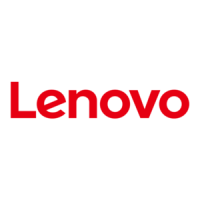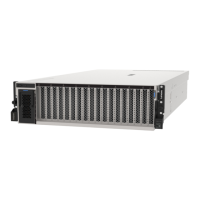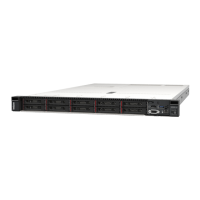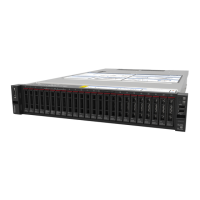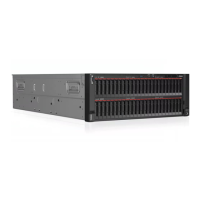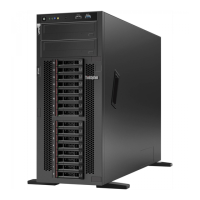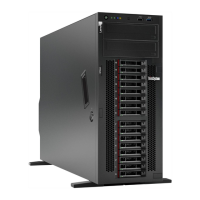More information about optimizing memory performance and configuring memory is available at the Lenovo
Press website:
https://lenovopress.com/servers/options/memory
In addition, you can take advantage of a memory configurator, which is available at the following site:
http://1config.lenovo.com/#/memory_configuration
For specific information about the required installation order of memory modules in your server based on the
system configuration and memory mode that you are implementing, see “DIMM installation rules” on page
45.
RAID configuration
Using a Redundant Array of Independent Disks (RAID) to store data remains one of the most common and
cost-efficient methods to increase server's storage performance, availability, and capacity.
RAID increases performance by allowing multiple drives to process I/O requests simultaneously. RAID can
also prevent data loss in case of a drive failure by reconstructing (or rebuilding) the missing data from the
failed drive using the data from the remaining drives.
RAID array (also known as RAID drive group) is a group of multiple physical drives that uses a certain
common method to distribute data across the drives. A virtual drive (also known as virtual disk or logical
drive) is a partition in the drive group that is made up of contiguous data segments on the drives. Virtual drive
is presented up to the host operating system as a physical disk that can be partitioned to create OS logical
drives or volumes.
An introduction to RAID is available at the following Lenovo Press website:
https://lenovopress.com/lp0578-lenovo-raid-introduction
Detailed information about RAID management tools and resources is available at the following Lenovo Press
website:
https://lenovopress.com/lp0579-lenovo-raid-management-tools-and-resources
Deploy the operating system
Tool-based deployment
• Single-server
– Lenovo XClarity Provisioning Manager Lite
https://sysmgt.lenovofiles.com/help/topic/LXPML/os_installation.html
Manual deployment
If you cannot access the above tools, follow the instructions below, download the corresponding OS
Installation Guide, and deploy the operating system manually by referring to the guide.
1. Go to
https://datacentersupport.lenovo.com/solutions/server-os.
2. Select an operating system from the navigation pane and click Resources.
3. Locate the “OS Install Guides” area and click the installation instructions. Then, follow the instructions to
complete the operation system deployment task.
106
ThinkSystem ST50 V2 Setup Guide
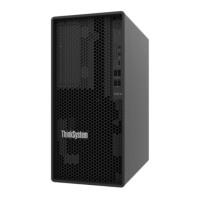
